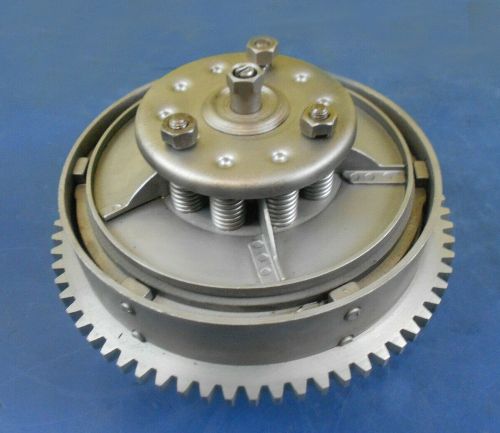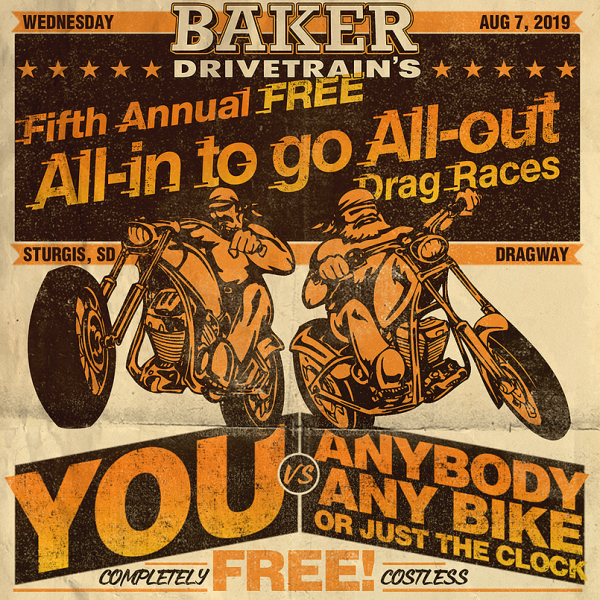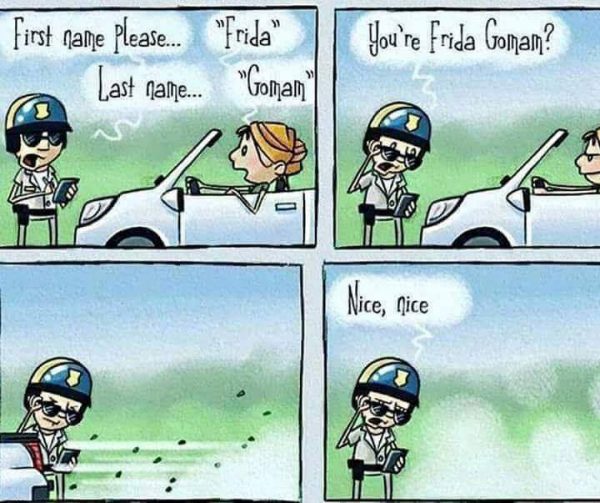In the Cantina – Future of Automobile Conference
By Wayfarer | | General Posts
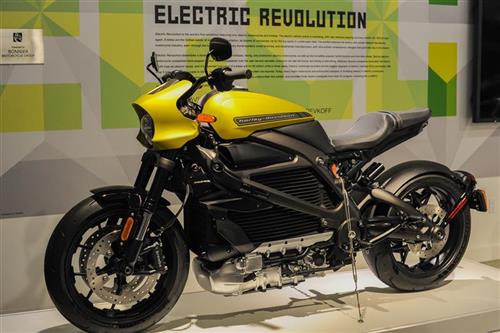 All the Best Minds Met at the Petersen Museum and Discussed the Wrong Topics
Recently the Petersen Museum proposed a symposium to study the future of Automobiles with leaders in the industry. I was dying to be there to listen to vehicle designers discuss the future of the automobile and travel. I’m going to post some of the YouTube links here to allow you to watch the findings. Below is the design and my take on this effort.
The Future of the Automobile Conference, held at the Petersen Automotive Museum, brings together immersive and inspirational talks, demos, test drives and exhibitions to give a glimpse into the future of our mobility. The conference explores the brave new world of the personal transportation revolution that is set to transform every city in the world.
READ THE REPORT by joining the Cantina – Click Here
All the Best Minds Met at the Petersen Museum and Discussed the Wrong Topics
Recently the Petersen Museum proposed a symposium to study the future of Automobiles with leaders in the industry. I was dying to be there to listen to vehicle designers discuss the future of the automobile and travel. I’m going to post some of the YouTube links here to allow you to watch the findings. Below is the design and my take on this effort.
The Future of the Automobile Conference, held at the Petersen Automotive Museum, brings together immersive and inspirational talks, demos, test drives and exhibitions to give a glimpse into the future of our mobility. The conference explores the brave new world of the personal transportation revolution that is set to transform every city in the world.
READ THE REPORT by joining the Cantina – Click HereMotorcycle Clubs and the One Percenter
By Wayfarer | | General Posts
 It’s no secret that Americans love outlaws, from the legends and lore of rebellious (and illegal) acts by the Founding Fathers, to the bushwhacking and bank-robbing capers of Butch Cassidy and the Sundance Kid, to the “bad boy” music of Elvis Presley, the Rolling Stones and Dr. Dre.
It’s no secret that Americans love outlaws, from the legends and lore of rebellious (and illegal) acts by the Founding Fathers, to the bushwhacking and bank-robbing capers of Butch Cassidy and the Sundance Kid, to the “bad boy” music of Elvis Presley, the Rolling Stones and Dr. Dre.
American culture and mass media have led inexorably to characters that embody this bad-boy attitude – a recent example being Jax, the heartthrob outlaw biker star of the TV show “Sons of Anarchy”. Western society has a long established canon from which we “learn” about society from fictional dramas. And the more we watch shows like “Sons of Anarchy,” the more a news story will seem to fit our mental construct of “how those people are.” The same is true of popular TV crime dramas’ portrayal of American minorities’ involvement in violent crime. And it seems that every time outlaw motorcycle clubs are portrayed in the news, it’s because of something terrible, such as the deadly events in Waco, Texas. Add to this the fact that the outlaw biker narrative has been largely controlled over time, not by members of the culture, but by outsiders and the misconceptions grow.
The term 1%er was first used in print in the pages of Life Magazine during the 1960’s. The article was a contrived response to an AMA rally in Hollister CA, after encouraging certain individuals to get drunk and ride through town the media then reported on ‘drunken’ motorcycle clubs giving rise to the popular misconception of bikers and also the movie The Wild One. The American Motorcycle Association stated that 99% of the people at their events were God fearing and family oriented. The other 1% were hard riding, hard partying, non mainstream type people. Thus the term 1%er found its place in popular vernacular.
Motorcycle clubs were historically born of a love of the machine, racing, riding and from military service. Gangs began for various reasons as well, but largely as a form of protection for outsiders or ethnic immigrants residing in inner cities. Their social structure is overwhelmingly democratic from the local to the international levels. Officers are democratically elected and hold office so long as they meet the memberships’ needs.
In contrast, Motorcycle Gangs can be seen as more autocratic than democratic, where leaders emerge more for their charismatic leadership and illicit earning abilities than for their abilities to run organisations. Motorcycle clubs are organised hierarchically, with strictly defined chains of command and lines of communication. MCs elect secretaries whose jobs are to maintain meeting minutes, keep track of committees and chairs, and see that old business is complete and new business is on the agenda. Treasurers also are elected officials and they attend to fiduciary responsibilities such as collecting membership dues, paying clubhouse expenses and financial planning for the future. Both secretaries and treasurers are required to produce written documents for the membership to review and approve during each meeting.
It’s not easy becoming a patch-holder. Many have compared “prospecting” – the process of earning full membership – to that of military basic training, where the individual is broken down in order to be reformed into a part of a collective: To think not of one’s self but of others, and to understand that one’s actions or inactions impact the team and the organisation. But prospecting takes months and sometime a year or more (5 years for one MC). Prospecting is physically, emotionally, and intellectually demanding and not everyone can do it. A significant amount of social status is conferred upon those with the steel to make it. Perhaps this is the only obvious similarity between MCs and gangs.
MC is generally reserved for those clubs that are mutually recognised by other MC or outlaw motorcycle clubs. This is indicated by a motorcyclist wearing an MC patch, or a three piece patch called colours, on the back of their jacket or riding vest. Outlaw or 1%er can mean merely that the club is not chartered under the auspices of the AMA, implying a radical rejection of authority and embracing of the “biker” lifestyle as defined and popularised since the 1950s and represented by such media as Easyriders magazine, the work of painter David Mann and others. In many contexts the terms overlap with the usual meaning of “outlaw” because some of these clubs, or some of their members, are recognised rightly or wrongly by law enforcement agencies as taking part in organised crime.
That sense of brotherhood was on display at a funeral for a patch-holder slain at Waco. Members of the Hells Angels, Bandidos, Mongols, Vagos and more than 50 other motorcycle clubs come together in peace to mourn the passing of a man who touched the lives of so many in his community. To them, he was much more than a biker or a patch-holder — he was their Brother, with all the familial love, respect, and honour that that word conveys. Possibly such a gathering has never happened before. This convergence of contrasting MCs was no media stunt. There were no media in the funeral that day (although there was one white, unmarked van, out of which came uniformed men clad in body armour and armed with assault rifles).
Perhaps the singularly most important distinction between outlaw motorcycle clubs and gangs is evidenced through philanthropy. Many motorcycle clubs are closely intertwined with charity work: MC family members are or have been affected by the maladies the charities seek to eradicate, and members of the local community are in legitimate and immediate need. MCs support a wide variety of local, national, and international charities that seek to end disease, poverty and hunger, but especially supported are disabled veterans organisations. Charity is to members of motorcycle clubs as petrol and oil are to their machines. For some, it’s a major reason why they join and stay in MCs.
Clubs have been observed providing 24/7 security at battered women’s shelters, holding motorcycling events such as Poker Runs to raise money for local families whose homes were destroyed by fire or natural disasters, or to help families stricken by some other tragic event get on their feet. If a member of the community is in legitimate need, and the MCs are able to help, they almost always do. Even if it’s just “Passing the Hat,” where patch-holders literally pass around a baseball cap into which members place what cash they can spare. This might not seem like much, but to a family in desperate need of short-term assistance, this can mean the difference between having electricity and water and going without.
The above puts perspective on the recent statement that certain US law enforcement officials and organisations have labeled outlaw motorcycle clubs as a domestic terrorist threat, something is that is obviously more concerning since many of these clubs are made up of veterans who have fought bravely in recent wars for their country.
S&S Slip Ons for M8 HD(R) Softail(R) Models NOW 50 STATE LEGAL!
By Wayfarer | | General Posts
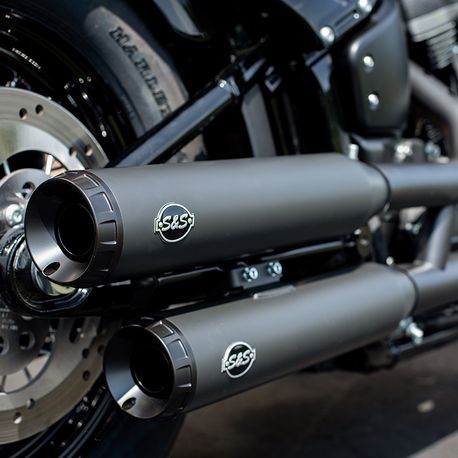
Same great product, now with CARB certification. Version for most new Softail models (Grand National is my favorite and they sound killer). ~ DZ
NEW – S&S Grand National and Slash Cut Slip Ons for M8 HD® Softail® Models
S&S Cycle has been on the gas for six decades, with the last handful of years heavily focused on high performance exhaust systems. Their popular Grand National muffler line recently grew to include the latest generation of HD® Softail® models and they are now adding a lower dollar slash cut version as well. Why is an S&S slip on better? We asked the same question and they showed us their elaborate array of dynos, data acquisition tools and emissions lab. Add to that they are now CARB certified and warranty friendly. We like that almost as much as we do the legitimate v-twin exhaust note and healthy bump in Hp and torque (91Hp and 113lb/ft!). Available in show chrome or ceramic coated black for 2018-19 HD® Street Bob®, Low Rider®, Softail Slim®, Deluxe, Breakout®, Fat Boy® and Heritage® Classic. For more info, check out https://www.sscycle.com/grand-
Harley Clutch History 101
By Bandit | | General Posts
 It all started in 1903 or there abouts…
It all started in 1903 or there abouts…
The motor company went through a number of changes over the years with the way they transferred the power from the motor/transmission to the rear wheel. The one most commonly know looked like this:
Now, this clutch may have been the bad ass doohickey in the day, (and while there are still bikers out there that swear this clutch is the best), it just ain’t!
That old style stud and coil spring clutch had three major disadvantages that a diaphragm clutch doesn’t have.
- The more you compress the coil springs to engage better, the harder it is to pull in the clutch lever in.
- The friction plates ride up and down on the studs about approx. 1/4″ and wear grooves in the studs creating a hang up.
- The needle bearings are trapped in a stamped steel retainer that is so sloppy it lets the clutch hub wiggle and wobble so the friction liner on the rear of the hub it tends to contact the rar of the clutch basket and that’s when the bike pulls you through a stop sign with the clutch pulled in!
Diaphragm Spring technology just works better. It’s easier on the wrist, it holds more power and it is infinitely easier to adjust.
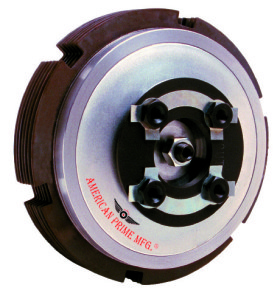 1056-0002
1056-0002
Diaphragm spring makes it easy to pull in the lever and completely engages and disengages the clutch so its easier to get into neutral and easier to get into gear. This one’s for you!
FITS ALL PRE-EVO BIG TWINS (1936-84) WITH EARLY DRY STYLE CLUTCH.
–Ben Kudon
http//www.americanprime.com
FUTURE OF THE AUTOMOBILE CONFERENCE
By Bandit | | General Posts
MAY 3, 2019

Editor’s Note: Recently the Petersen Museum proposed a symposium to study the future of Automobiles with leaders in the industry. I was dying to be there to listen to vehicle designers discuss the future of the automobile and travel. I’m going to post some of the YouTube links here to allow you to watch the findings. Below is the design and my take on this effort:
https://www.youtube.com/watch?v=aVBIlQAh6Y0&list=PL5iSAdHStf8FA_kBAlK7B_FQQGaJhtKhR
The Future of the Automobile Conference, held at the Petersen Automotive Museum, brings together immersive and inspirational talks, demos, test drives and exhibitions to give a glimpse into the future of our mobility. The conference explores the brave new world of the personal transportation revolution that is set to transform every city in the world.

INTRODUCTION: VISIONS OF TOMORROW
8:30 – 9:30 AM
Much like the automobile revolutionized transportation over a century ago, society is on the cusp of a major transformation in how people get around. Massive changes will ripple through the global economy, as well as our everyday lives. Respected thought leaders from the automotive and technology industries, academia, and public policy will share their perspectives on the myriad of challenges and opportunities for the future of the automobile.

KEYNOTE: DESIGNING THE FUTURE – KLAUS BISCHOFF
9:30 – 10:30 AM
Implementing the ideas driving future automotive trends will fall to the hands of the engineers and artists populating design studios throughout the industry. New technologies will require a reassessment of balance and proportion to accommodate their components. A revolution in people’s relationship with the automobile, notably the potential liberation of the driver from control responsibility, will trigger a reconceptualization of interior layout and included systems. It is the designers who will truly decide what the future of the automobile looks like.

BREAKOUT 1
WHEN CARS TALK: CONNECTIVITY AND SECURITY
10:40 – 11:30 AM
Self-driving cars will undoubtedly foster a world where people’s ties to their vehicle are lessened, making the connections between cars more critical. Inter-vehicle communication backs up onboard sensors to help navigate the autonomous landscape. This dependence on communication demands strict control of data integrity and security.

BREAKOUT 1
WHERE THE SIDEWALK ENDS: THE FUTURE OF INFRASTRUCTURE AND CITY PLANNING
The original rise of the automobile led to wholesale changes to the infrastructure and patterns of habitation of the day. Cars enabled people to travel further to work, play, and live, leading to networks of congested highways, urban sprawl, and the rise of the suburbs. Autonomy promises another transformation in transportation and city planning, as computer-controlled cars can be more densely packed on roads, and on-demand vehicles lower the need for parking.

BREAKOUT 2
THE FUTURE OF OWNERSHIP AND RIDESHARING
11:40 – 12:30 pm
For the better part of a century, the car has been a central part of people’s lives. However, many people feel that the love affair people have with their car is ending, and the newer generations are increasingly uninterested in automobiles. As cars become more of a service and less of a possession, radical changes are to be expected for automakers, insurers, and many other industries that have been built up around the automobile.

WHO IS IN THE DRIVER’S SEAT? ARTIFICIAL INTELLIGENCE AND AUTONOMY
11:40 – 12:30 pm
Removing humans from the driving equation requires replacing their senses and decision-making. Advances in sensors and artificial intelligence enable this future, as technology progressively replaces the human component. While partly a function of technological capacity, the rise of autonomy opens up a pandora’s box of ethical issues that must be addressed as well.

MID-DAY KEYNOTE: HUMAN DRIVING IN THE AUTONOMOUS FUTURE – MCKEEL HAGERTY
1:30pm- 2:30 pm
McKeel began playing with cars as a boy and hasn’t stopped since, turning his parent’s small local insurance agency into the world’s largest provider of specialty insurance to vintage vehicle enthusiasts and an automotive lifestyle brand focused on the love of cars and driving.
His “grow yourself first” approach to life and leadership has been so successful that in 2016-2017 he was elected international chairman of YPO, the world’s largest peer-to-peer group for CEOs. During his term, he traveled extensively, talking to world leaders and business innovators about leadership and success. He’ll share his thoughts on these subjects in his first book, “Who Will Lead?” due out next spring.
McKeel’s knowledge and enthusiasm have given him a reputation as an authority within the automotive and automotive media worlds, representing the classic car community on numerous boards and advisory groups, and appearing regularly as a commentator for ESPN, SPEED, CNBC and Discovery. He is also a long-time judge of the prestigious Pebble Beach Concours d’Elegance.

BREAKOUT 3
POWERING THE FUTURE
2:40 – 3:30 pm
While autonomy and self-driving cars get the majority of popular attention, the most progress toward transforming automobiles has occurred in propulsion. While electric vehicles are not a new idea, modern advances in motors and, most importantly, batteries, have greatly increased their capabilities. As the future of the automobile goes electric, are the days of internal combustion numbered, and how does this affect the infrastructure and services built around the car?

BREAKOUT 3
HUMAN-COMPUTER INTERFACES, DESIGN, AND THE DRIVING EXPERIENCE
2:40 – 3:30 pm
The set of instruments and displays found on most vehicles has been standardized over the course of decades to maximize driver ease and control. With the increased dependence on technology, and less driver responsibility, new approaches are necessary to provide feedback to drivers and to keep them engaged with the driving experience. How do you remove control from people while still keeping their attention?

BREAKOUT 4
RISING CHINA: COMPETITION OR COOPERATION IN FUTURE AUTOMOTIVE TECHNOLOGY
3:40 – 4:30 pm
The birth of the car was a product of innovation in a core set of advanced industrialized countries. More than a century later, a new revolution in automotive design is taking place against a setting of globalized industries and technologies. New market entrants, such as China, are seeking to be leaders in the new era of autonomous automobiles. Will international competition rule the day, or will countries learn to cooperate in the establishment of standards and the sharing of technologies?

BREAKOUT 4
THE INDUSTRY FUTURE: MANUFACTURING TRANSITION
3:40 – 4:30 pm
The rise of autonomy and electric vehicles not only will foster change in how people use their cars, but also in how automobiles are made. New designs, utilizing innovative production techniques and advanced materials, will require retooling by major automakers, while also creating opportunities to new market entrants. Just as manufacturers proliferated during both the automobile’s infancy and the period following the Second World War, the future of the automobile is likely to entail waves of decentralization, strategic partnerships, and eventual reconsolidation around a potentially different set of key firms.
Here is information on all the talks and panelists — https://www.futureoftheautomobile.org/


The other side of the equation
I would hope some of the speakers and attendees would address the following: A chunk of the public believe there’s nothing entertaining or invigorating about driving a car or riding a motorcycle. I don’t buy it. This is a concept fostered by enabled kids, who are not responsible for their own transportation and the threat of Global Warming. Doomsday is at hand if you don’t stop driving your wonderful car!
Some believe that all the future millennials want only to stare at their cell phones for the rest of their lives, no physical involvement with the rest of the world. I beg to differ, which would change the direction of this symposium. So, let’s turn the page and call it the Future of the Driving Experience. How can we improve the driving experience?
In this case the over-riding goal would be to enhance the driving experience since as they said, “The automobile industry is responsible for over 7 million jobs in just the U.S.” So, why are cars left parked for 95 percent of the time?”

I would suggest Congestion should be a major topic, which would lead to enhanced infrastructure. Could folks enjoy a magnificent driving experience through expanded infrastructure?
The Driving experience topic could include safety technology, automation, etc.
The electric vehicle topic could also embrace infrastructure and how electric cars could remain charged and maintained.
A growing population needs to be a topic. Can we build lanes in interesting ways to make the driving experience more fun and entertaining? Or do we need to build vehicles capable of airborne travel to avoid the use of more roads. I personally want to see the flying chopper. It’s coming.
We could also study government interference. How is owning a car or motorcycle more costly and cumbersome than in the past. How could we improve the driving ownership experience?
And finally, the rotten egg in all these discussions. Your booklet lists Transportation as the cause of one quarter of greenhouse emissions. That’s not true. More and more this effort to make mom’s SUV the bad guy is falling apart. This obviously needs to be a part of the discussion.
–Bandit
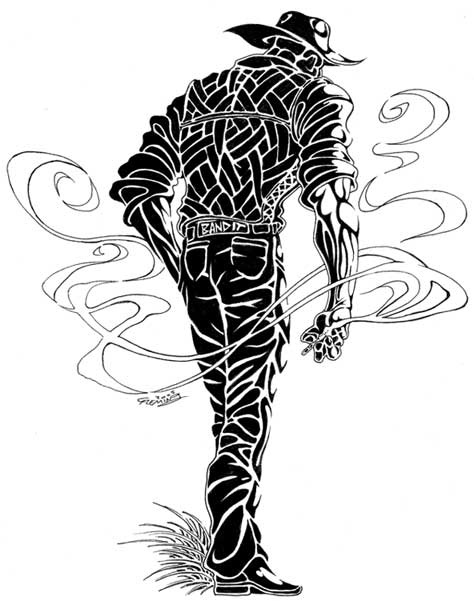
The 5th Annual BAKER “All-in to go All-out” Free Drag Race Event Invites You To Race Any Bike
By Bandit | | General Posts
June 10, 2019, Haslett, MI – BAKER Drivetrain is bringing back the free for all drag racing event at the Sturgis Dragway for the fifth year in a row!
The free drag racing with the BAKER Drivetrain crew will go from 5 pm to midnight on Wednesday, August 7th, 2019.
The Drag Race at night is open to the public, no admission charge, no registration fees and any and all 2-wheel or 3-wheel bikes welcome. See you all there!
Enabling all to ride, BAKER welcomes everybody to freely push the limits of their bikes, grits, and wits on the drag strip. Where else will you get to go so fast in Sturgis?
FROM THE NMA–Surveying Driver License Renewal Requirements – The Responses
By Bandit | | General Posts
In NMA E-Newsletter #541 published two weeks ago, we encouraged readers to participate in a short online survey about testing requirements for older drivers. The survey was designed to help us better understand how you feel about licensing standards for advanced-age drivers. Several hundred responses have been received─thank you!─which has made for some interesting reading. The survey remains open through the end of June and can be found here.
The responses through early June to the first four survey questions are summarized here:
- Should driver license renewal requirements increase in frequency and/or scope for drivers who have reached a certain age?
No 40.2%
2. Above which age should drivers be required to pass additional licensing requirements?
65 10.2%
70 28.7%
75 16.2%
- How frequently should advanced-age drivers be tested?
Every two years 56.4%
Every four years 34.4%
- What should advanced-age driver’s license renewal testing consist of (choose all that apply)?
Knowledge (written) test 43.7%
Road test 71.2%
No major surprises but still helpful to get a sense of the overall sentiment about the testing of older drivers. The fun really began with the responses to Question #5 which allowed for more free-form responses and opinions:
- Please share additional thoughts about advanced-age driver’s license renewal requirements, including any not covered in the above questions.
The most common response was similar to this:
Requirements for additional testing should be triggered by objective evidence of unsafe driving practices.
While we don’t have the space to publish all of the responses, below is a sampling. We will be including more comments to Question #5 in the Summer 2019 issue of Driving Freedoms which will be mailed to supporting members the latter half of July.
I’ve heard the statistic that while advanced-age drivers get in fewer accidents, this is because they drive fewer miles. On a per-mile-driven basis, advanced-age drivers are among the highest risk for accidents. A road test should be mandatory every two years after age 65 or 70 (I don’t know the average age where accidents per mile driven go up, but that should be the determining factor for an appropriate age).
What we really need is a short cognitive test that will measure how well older drivers think and react. It could be done in 5 or 10-minutes at a kiosk or computer terminal. Vision can be an issue but it’s the cognitive abilities that can deteriorate rapidly and unpredictably later in life.
Instead of going on an actual road test, it may be a lot safer to conduct the testing using virtual reality machines much like what the jet pilots do. A lot of areas can be tested safely through that method instead of going in an actual road trip.
This is a very complex issue. Ideally, EVERYONE should be periodically tested. That being said, however, the most important components of safe driving are difficult to adequately test for. Obviously, there needs to be certain minimum physical capabilities. Beyond that, the closest one can probably get to a fair and adequate assessment of driving competency is probably by an extensive, inclusive, road test. Even that must be properly designed and administered. Good driving is far more about situational awareness and good judgement with appropriate response to various, often fluid, situations than merely strict adherence to traffic laws and regulations.
Actually, the requirements to obtain and renew a driver’s license should be much more stringent — especially to initially obtain a license. We should follow Germany’s example — tough requirements and higher speed limits, unlimited in some rural areas.
As a 77-year-old Florida Highway Patrol Auxiliary trooper with a patrol car at my home, I do solo patrol. I believe that any problems should be dealt with at an individual level. I am a retired Air Force fighter pilot and a retired airline pilot. I have learned to resent the continuing FAA testing required to fly my own aircraft. I also know that most problems that I deal with on the roads are not related to age. Pathetic buffoons who don’t think they should stop before turning right on red, people pulling out in front of through traffic, people hogging the left lane on interstates, people driving too slow with a long line of cars behind them on a road with limited passing opportunities. I notice no age relationship to any of these. Don’t add more restrictions to people’s lives.
In California, I believe as long as you’re not getting tickets or involved in accidents, they leave you alone. Imagine the work load if suddenly people over a certain age are tested every couple of years.–Bandit
Ross McKitrick: This scientist proved climate change isn’t causing extreme weather — so politicians attacked
By Bandit | | General Posts
And so, many scientists who have the facts and know the truth remain silent
By Ross McKitrick
This week in Vancouver, Prime Minister Trudeau said the federal carbon tax, a key pillar in his government’s climate policy, will help protect Canadians from extreme weather. “Extreme weather events are extraordinarily expensive for Canadians, our communities and our economy,” he said, citing the recent tornadoes in Ottawa and wildfires in Western Canada. “That’s why we need to act.”
While members of the media may nod along to such claims, the evidence paints a different story. Roger Pielke Jr. is a scientist at University of Colorado in Boulder who, up until a few years ago, did world-leading research on climate change and extreme weather. He found convincing evidence that climate change was not leading to higher rates of weather-related damages worldwide, once you correct for increasing population and wealth. He also helped convene major academic panels to survey the evidence and communicate the near-unanimous scientific consensus on this topic to policymakers. For his efforts, Pielke was subjected to a vicious, well-funded smear campaign backed by, among others, the Obama White House and leading Democratic congressmen, culminating in his decision in 2015 to quit the field.
A year ago, Pielke told the story to an audience at the University of Minnesota. His presentation was recently circulated on Twitter. With so much misinformation nowadays about supposed climate emergencies, it’s worth reviewing carefully.
Pielke’s public presentation begins with a recounting of his rise and fall in the field. As a young researcher in tropical storms and climate-related damages, he reached the pinnacle of the academic community and helped organize the so-called Hohenkammer Consensus Statement, named after the German town where 32 of the leading scientists in the field gathered in 2006 to sort out the evidence. They concluded that trends toward rising climate damages were mainly due to increased population and economic activity in the path of storms, that it was not currently possible to determine the portion of damages attributable to greenhouse gases, and that they didn’t expect that situation to change in the near future.
Shortly thereafter, the Intergovernmental Panel on Climate Change (IPCC) released its 2007 report, largely agreeing with the Hohenkammer Consensus, while cherry-picking one unpublished study (and highlighting it in the Summary for Policymakers) that suggested a link between greenhouse gases and storm-related damages. But the author of that study — who just happened to be the same IPCC lead author who injected it into the report — later admitted his claim was incorrect, and when the study was finally published, denied the connection.
In 2012, the IPCC Special Report on Extreme Weather came out and echoed the Hohenkammer Consensus, concluding that once you adjust for population growth and economic changes, there is no statistical connection between climate change and measures of weather-related damages. In 2013 Pielke testified to the United States Congress and relayed the IPCC findings. Shortly thereafter, Obama’s science advisor John Holdren accused him of misleading Congress and launched a lengthy but ill-informed attack on Pielke, which prompted congressional Democrats to open an investigation into Pielke’s sources of funding (which quickly fizzled amid benign conclusions). Meanwhile heavily funded left-wing groups succeeded in getting him fired from a popular internet news platform. In 2015 Pielke quit the climate field.
… there’s no solid connection between climate change and the major indicators of extreme weather.
So where did the science end up?
In the second half of his talk, Pielke reviews the science as found in the most recent (2013) IPCC Assessment Report, the 2018 U.S. National Climate Assessment, and the most up-to-date scientific data and literature. Nothing substantial has changed.
Globally there’s no clear evidence of trends and patterns in extreme events such as droughts, hurricanes and floods. Some regions experience more, some less and some no trend. Limitations of data and inconsistencies in patterns prevent confident claims about global trends one way or another. There’s no trend in U.S. hurricane landfall frequency or intensity. If anything, the past 50 years has been relatively quiet. There’s no trend in hurricane-related flooding in the U.S. Nor is there evidence of an increase in floods globally. Since 1965, more parts of the U.S. have seen a decrease in flooding than have seen an increase. And from 1940 to today, flood damage as a percentage of GDP has fallen to less than 0.05 per cent per year from about 0.2 per cent.
And on it goes. There’s no trend in U.S. tornado damage (in fact, 2012 to 2017 was below average). There’s no trend in global droughts. Cold snaps in the U.S. are down but, unexpectedly, so are heatwaves.
The bottom line is there’s no solid connection between climate change and the major indicators of extreme weather, despite Trudeau’s claims to the contrary. The continual claim of such a link is misinformation employed for political and rhetorical purposes. Powerful people get away with it because so few people know what the numbers show. Many scientists who know better remain silent. And the few who push back against the propaganda, such as Roger Pielke Jr., find themselves on the receiving end of abuse and career-threatening attacks, even though they have all the science in their corner. Something has gotten scary and extreme, but it isn’t the weather.
• Ross McKitrick is a professor of economics at the University of Guelph and senior fellow of the Fraser Institute.
–Financial Times
Capitol Hill Update from the Motorcycle Riders Foundation
By Bandit | | General Posts
|
|
Last Day for AMA Member Discount Tickets
By Wayfarer | | General Posts

AMA Vintage Motorcycle Days, featuring Honda in less than one month away! Join us July 5-7 at Mid-Ohio Sports Car Course in Lexington, Ohio, for a weekend filled with vintage racing, the AMA Motorcycle Hall of Fame Bike Show, presented by Old Bike Barn, trials, lots of entertainment and the largest motorcycle swap meet in North America. Learn more at www.amavintagemotorcycledays.com.
AMA Members receive 25 percent off a Weekend Pass and even steeper discounts on single-day passes when you order tickets in advance. The deadline to order your tickets and receive the discount is today, June 8! Order Tickets to #AMAVMD Today!
Stay up-to-date on schedules, entertainment, racing, bike shows and more by subscribing to AMA Vintage Motorcycle Days E-News!


